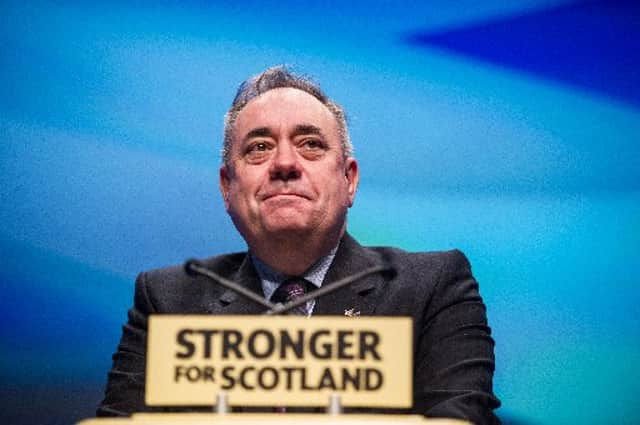Alex Salmond: The SNP's election winner


When Alex Salmond returned as leader of the SNP in September 2004 he made a bold prediction.
He announced the party would win the next Scottish Parliament elections and would do so by “offering a vision to the people where currently there is just a vacuum”.
Advertisement
Hide AdAdvertisement
Hide AdWhen voters went to the polls in May 2007, Salmond’s gamble paid off. The SNP may have won just one more seat than Labour, but crucially it also won the popular vote, handing it a mandate to form a government at Holyrood for the first time.
Now, as the 10 year anniversary of that historic election looms, it’s easy to forget just how unlikely the prospect of the Nationalists winning power once seemed.
“It was a big gamble returning as leader, but the bigger gamble was saying that he’d be First Minister in 2007,” said political journalist and Salmond biographer David Torrance.
“Given where the party stood in the polls at the end of John Swinney’s leadership, that was quite a goal. As was going for a constituency seat at Holyrood rather than a list place. It could all have gone horribly wrong.”
Salmond was returned as an MP in the 2005 General Election - Tony Blair’s last as Labour leader - but promised he would switch to Holyrood full-time upon winning power in 2007.
Before he could do that, he had to first dislodge the Labour-Liberal Democrat coalition that had governed the Scottish Parliament since its opening in 1999.
Although Scottish Labour had endured a rough patch following the untimely death of Donald Dewar in October 2000, the Holyrood coalition had since developed a reputation for competence under leader Jack McConnell - even if it wasn’t always the most inspiring.But the party’s reputation across the UK had suffered in the aftermath of the Iraq War.
“Labour and the Lib Dems had had a good run and were running out of steam,” continued Torrance. “There was also the backdrop of Iraq and Tony Blair’s growing unpopularity.
Advertisement
Hide AdAdvertisement
Hide Ad“By 2006 there was a perfect storm, coinciding with a feeling that the SNP deserved a shot at government.”
The SNP manifesto offered some eye-catching populist policies, including a pledge to scrap the council tax, abolish bridge tolls and increase the number of police officers.
One of the party's biggest weapons was Salmond himself. As an MP since 1987 and SNP leader throughout the 1990s, he was one of the most famous political personalities in the UK.
Billboards and advertising hoardings across the country carried presidential-style photographs of the MP and his deputy Nicola Sturgeon in the run-up to the vote, along with the slogan “It’s time”.Torrance believes this approach worked brilliantly.
“Unlike later on, post-2011, Salmond at this stage kept his worst characteristics in check, he was less pugilistic and more statesmanlike,” he added.The SNP’s central policy - that of achieving Scottish independence - was also handled deftly to reassure swing voters.
“The whole point of the referendum policy adopted by the SNP in 2000 was to separate the two in voters’ minds, telling them they could vote SNP without necessarily getting independence,” Torrance said. “It worked in 2007 and even more so in 2011.”